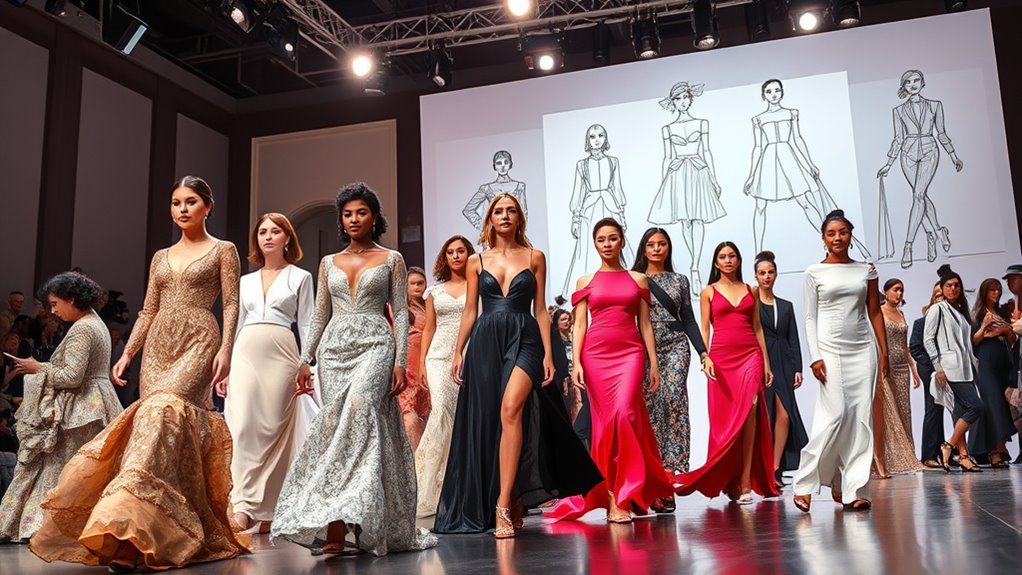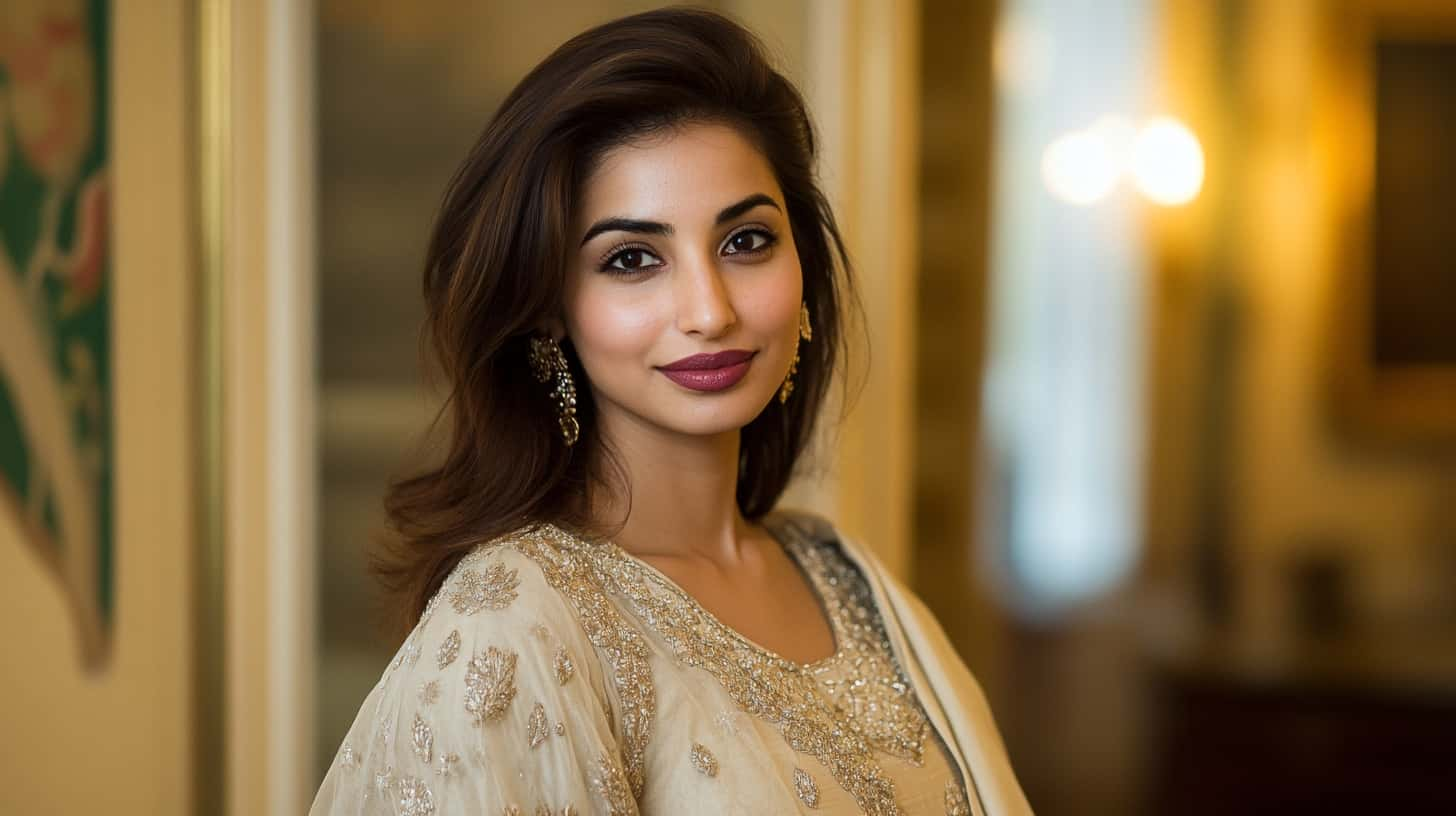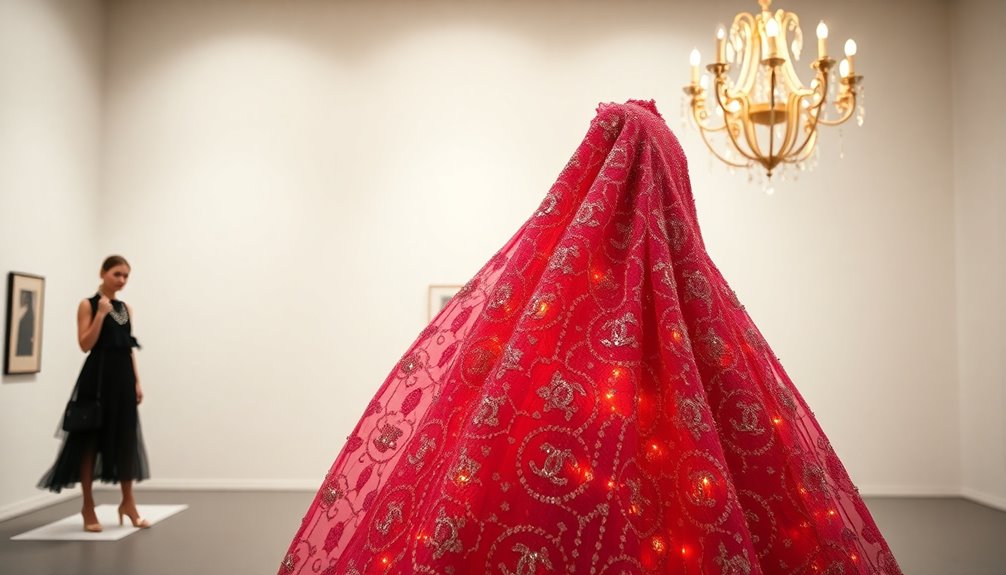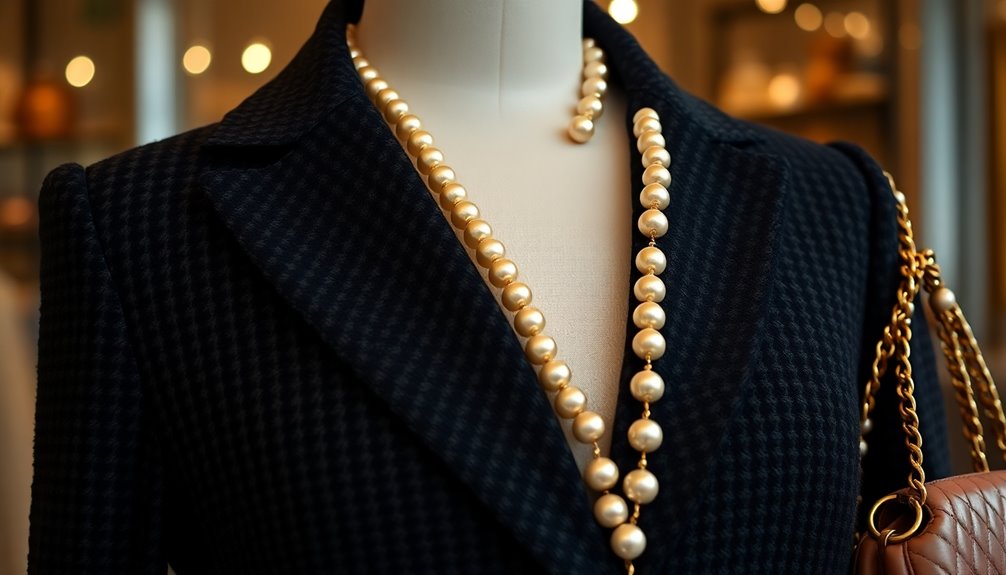Fashion cycles have shifted from exclusive couture shows to vibrant, ready-to-wear collections driven by heritage inspiration, innovation, and sustainability. You’ll notice trends quickly evolving through technology like digital design, virtual try-ons, and social media, making fashion more accessible and rapid. Brands now blend past styles with modern ideas, emphasizing responsibility and ethics. If you keep exploring, you’ll discover how digital advances and cultural shifts continue shaping this exciting journey.
Key Takeaways
- Fashion cycles historically shift from exclusive couture to mass-produced ready-to-wear, democratizing high fashion.
- Couture influences ready-to-wear collections through reinterpretation of luxury details and craftsmanship.
- Ready-to-wear emerged as a response to increasing demand for accessible, stylish, and affordable clothing.
- Digital innovation accelerates trend dissemination, making fashion cycles more rapid from runway debut to retail.
- Sustainability and consumer preferences now shape the evolution from couture exclusivity to inclusive, eco-conscious ready-to-wear.

Fashion cycles are a constant dance between past trends and modern innovation, shaping what we see on runways and streets today. As you observe the clothing around you, it’s clear that designers and brands draw inspiration from history, revisiting styles and motifs that feel both nostalgic and fresh. But this cyclical nature isn’t just about aesthetics; it also reflects a shift toward more sustainable practices and digital innovation, which are transforming the industry from the inside out. You might notice how brands are increasingly embracing eco-friendly materials, reducing waste, and adopting transparent supply chains. These sustainable practices aren’t just buzzwords—they’re becoming essential as consumers demand accountability and environmental responsibility. This shift encourages you to make more conscious choices, whether it’s opting for brands that prioritize sustainability or supporting secondhand shopping, which keeps garments in circulation longer and reduces the overall environmental footprint.
Meanwhile, digital innovation is revolutionizing how fashion is created, marketed, and experienced. From virtual try-ons to augmented reality fashion shows, technology bridges the gap between design inspiration and consumer engagement. As you browse online stores or scroll through social media, you’re likely encountering augmented reality filters that let you see how a piece of clothing looks on you before buying. Digital tools are also enabling designers to experiment with new textiles and construction techniques, pushing the boundaries of what’s possible in fashion. This fusion of digital innovation and traditional craftsmanship accelerates the cycle of trends—what once took years to develop now unfolds in months or weeks, making the cycle faster and more dynamic. You’re part of this rapid evolution, witnessing how fashion responds in real-time to cultural shifts, technological advancements, and environmental concerns. Additionally, the integration of electric vehicle technology into the industry is inspiring new approaches to sustainable fashion logistics and supply chain management, further supporting eco-conscious practices.
The interplay between sustainable practices and digital innovation means that fashion cycles are no longer just about fleeting trends but about responsibility and progress. As you engage with fashion, whether by purchasing, styling, or simply observing, you’re participating in a larger movement that values both heritage and forward-thinking. Brands that incorporate eco-friendly materials and leverage digital platforms are setting new standards, shaping future cycles that prioritize longevity, ethics, and innovation. This ongoing dialogue between past and present ensures that fashion remains vibrant, relevant, and conscious of its impact. Ultimately, you have the power to influence these cycles, supporting brands that align with your values and embracing the transformative potential of modern technology to make fashion more sustainable and inclusive.
Frequently Asked Questions
How Do Cultural Trends Influence Fashion Cycles?
Cultural trends considerably influence fashion cycles by shaping designs through cultural symbolism and tradition preservation. When you embrace cultural symbolism, you incorporate meaningful motifs that resonate deeply, making your style more authentic. Additionally, by preserving traditions through fashion, you connect with your heritage and respond to current trends. These influences keep fashion dynamic, blending old and new, and guarantee your wardrobe reflects evolving cultural identities.
What Role Does Technology Play in Fashion Cycle Evolution?
Technology accelerates fashion cycle evolution by enabling sustainable innovation and digital craftsmanship. You can now access faster production methods, reducing waste and environmental impact. Digital tools allow you to design and prototype with precision, shortening development times. This integration helps you stay ahead of trends, offering eco-friendly, innovative pieces. Ultimately, technology empowers you to create more responsible, cutting-edge fashion that meets modern consumers’ demands for sustainability and creativity.
How Do Designers Predict Future Fashion Trends?
You predict future fashion trends by analyzing industry reports, attending fashion shows, and following influencers. You also use color forecasting to identify upcoming color palettes and explore sustainable materials to anticipate shifts toward eco-friendly designs. By combining these insights with consumer behavior data and emerging technology, you can stay ahead of the curve, creating collections that resonate with future demands and sustainable priorities.
What Impact Do Social Media Influencers Have on Fashion Cycles?
Coincidences happen when social media influencers substantially influence your style choices. Through influencer marketing, they shape fashion cycles by showcasing trends on trendsetting platforms like Instagram and TikTok. Your quick access to these updates means trends spread fast, making influencers key players in accelerating fashion shifts. They connect brands directly with you, turning casual followers into trendsetters, and ultimately, they help shape the rapid evolution of fashion from couture to ready-to-wear.
How Do Economic Factors Affect the Pace of Fashion Changes?
Economic shifts directly influence how quickly fashion changes happen. When the economy is strong, you might see faster fashion cycles because consumer spending increases, encouraging brands to release new styles more often. Conversely, during economic downturns, you tend to see slower changes as people cut back on spending. So, your purchasing habits and the overall pace of fashion updates are closely tied to economic conditions and how much you’re willing to spend.
Conclusion
As you explore fashion’s cyclical nature, remember that trends come and go, yet influence remains. Notably, a 2022 study revealed that 70% of consumers are more likely to buy from brands that incorporate vintage styles, showing how past fashions continually resurface. By understanding these cycles, you gain a deeper appreciation for how couture and ready-to-wear evolve together, shaping your wardrobe and the industry’s future. Embrace the endless dance of fashion’s timeless innovation.










